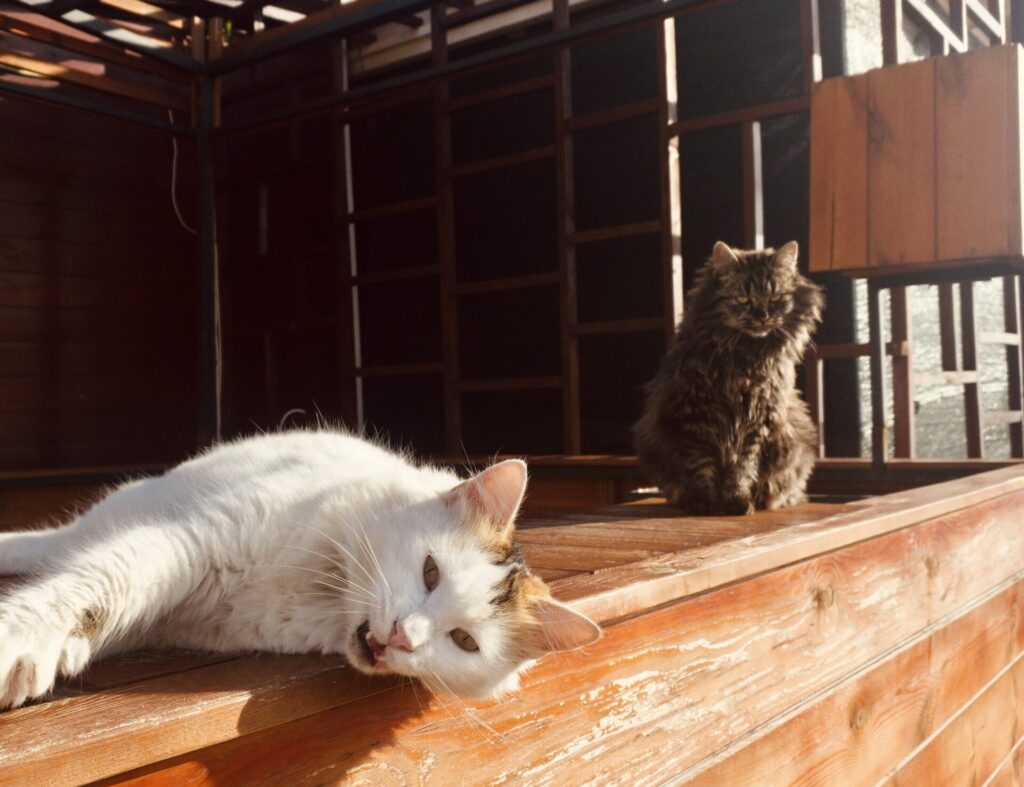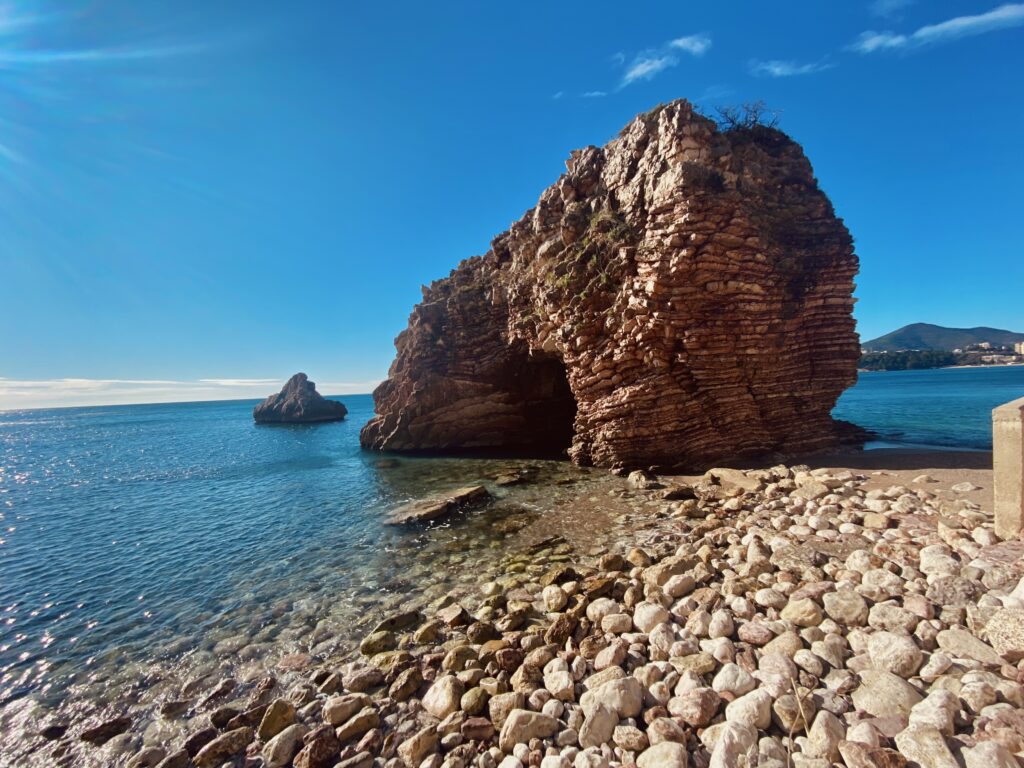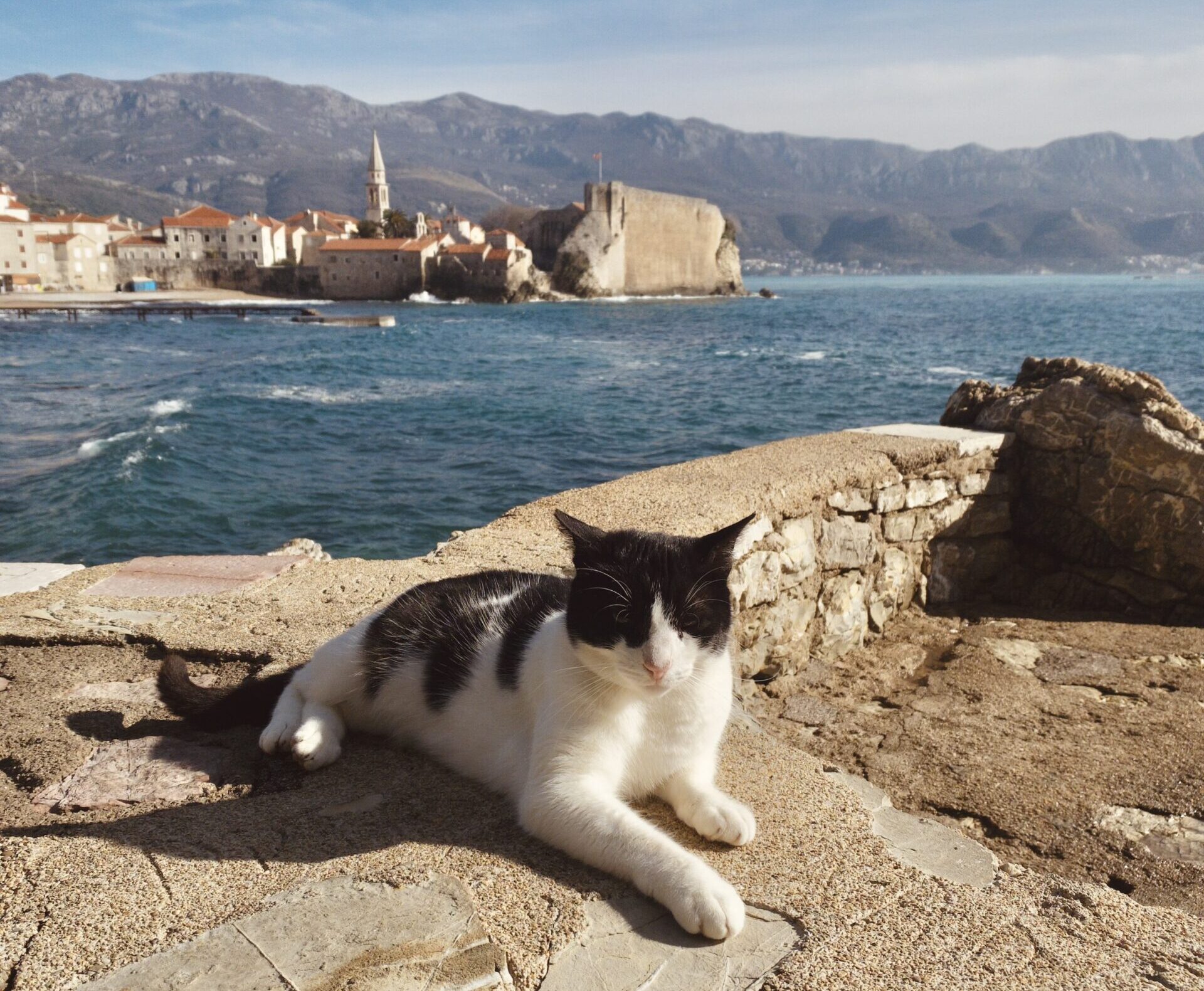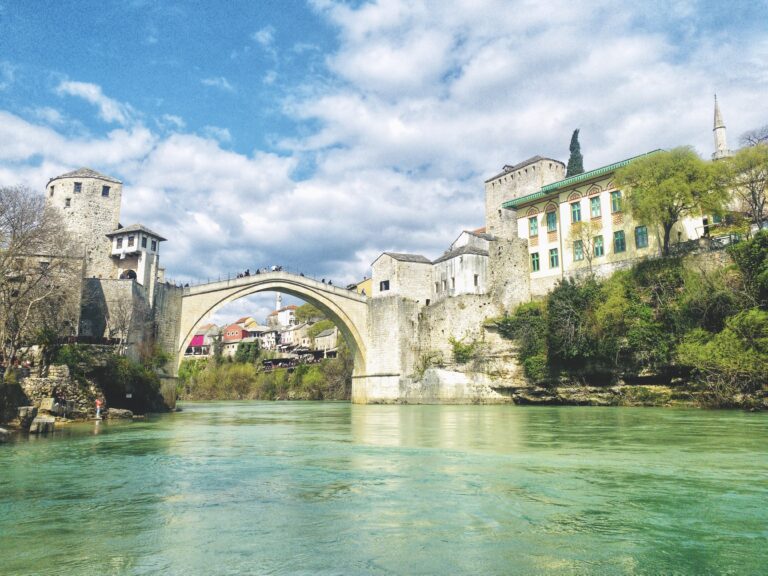Is Budva, Montenegro a good place to slow travel?
I spent January and February 2025 in the small city – or big town? – of Budva, Montenegro. It was my first visit to this tiny country. I was looking for mild winter weather, beautiful scenery, and affordable prices.
Why did I choose to base myself in Budva, specifically? The main reason is that I found that it had the best options in terms of reasonably priced apartments for the time period I wanted. The coast of Montenegro has a very distinct high season in summer, when everything is expensive and crowded. Budva is particularly a hotspot for its beaches and nightlife. Since the demand goes way down in winter, there are a lot of available units – mostly in fairly new, highrise apartments.
While you can also find some affordable places in other tourist-heavy towns like Tivat and Kotor, I got the impression that those places are even more seasonal (relying heavily on wealthy yachters in the former, and cruise ship passengers in the latter), and might feel a little boring for a long winter stay. I had read that Budva did not really shut down over the winter, and I found that to be true, with the exception of some beach bars and other seasonal-dependent businesses.
The fairly central location of Budva was another big plus, since you can easily take day trips to Kotor, Tivat, Cetinje, and other towns.
Cats rule this town

The first thing I noticed about Budva was the high population of stray cats – beginning with the one that greeted me when I arrived at my apartment building. After spending time on the coasts of Portugal, Spain, Italy, and now Montenegro, I know stray cats are a running theme throughout southern Europe. But so far, Budva and Kotor take the prize for having the most (granted, I have yet to visit Turkey or Greece). And the majority of them are super friendly…which is not the case everywhere. There are lots of water dishes and food set out for them, and I think (or at least hope) they are mostly treated well.
Vibes of Budva in the off season
Budva has a spectacular setting in a sort of bowl surrounded by the mountains, with the old town jutting out on a small peninsula. While it’s a naturally beautiful location, there is little room for the town to spread out further, and unchecked haphazard development means that this small town can feel quite cramped. Most newer buildings are highrises, and there is a lack of parking spaces even in the off season, which means you will see a lot of double parking and cars parked on sidewalks, forcing pedestrians into the street. It’s a mild annoyance in winter, but I can’t imagine what it’s like when it gets really crowded during the summer.
When I was researching Budva before I decided to visit, I saw it often described as “tacky,” “trashy,” “dirty,” and so on (though I did also read positive things, of course – and I understood that everyone will have a different impression based on their personal experiences and expectations). It’s a resort town, where people flock in summer for nightlife, clubbing, casinos, and beaches.
So what is left in the winter?
Well, it’s not brimming with culture, but the old town is quite pleasant and picturesque, if small. It has a few churches, a museum, and a fortress. And you still have the promenade, stunning views, and the beaches, even if it’s not swimming weather. Mogren Beach, which can be accessed via a cliffside walkway, is pretty spectacular. There are a few different easy hiking trails to various lookout points and waterfalls – if you are up to it, you can even walk all the way to Sveti Stefan from Budva on the Seven Bay Trail.

Food prices and options in Budva
I didn’t know what to expect in terms of food availability and prices when I arrived, but my only previous Balkans country was Albania, and I understood that Montenegro is even smaller, so imported items were bound to be somewhat limited and expensive. In some ways, Budva surprised me with what I could find – there was a pretty well-stocked Mega Market just across from my building, and a handful of other supermarkets selling things like Asian sauces, nutritional supplements, specialty health food items, etc. But they all had a different assortment and often wildly different prices, which meant a lot of going around to different shops and doing comparison shopping.
Of course, you don’t have to do that if you are OK sticking with the basics of a Balkan diet, and paying a little more sometimes for convenience. The good thing about Budva is that it is so compact that you are never more than a short walk away from a grocery store, even if it is a smaller one.
There are some quirks to Montenegro grocery stores – the produce section is usually pretty dire, with a lot of sad-looking fruit and veg (granted, it was winter). A store employee will weigh your bags and label with the price – this must be done before you go to the register. Pre-packaged fresh meat is not common, so you will need to ask the butcher for what you want…and ground beef is even rarer, as the locals prefer a mix of pork and beef for their pleskavica (meat patties, the local cousin of the hamburger).
Hidden costs – watch out!
But the main thing that took me by surprise at first when shopping was the PDV, or VAT as we usually refer to it in the Anglosphere. This is a whopping 21% in Montenegro and it applies to almost everything…yes, including food. There are a few essential items which are “only” taxed at 7% – milk, bread, oil, flour. Now, this might not be a big deal if the full price were displayed in the stores before you purchase…but it’s not. So it can be quite a sticker shock at checkout if you weren’t prepared to mentally add 21%.
Coming from the US, I always thought we were the outlier country that doesn’t add tax before the bill is calculated. But even there, very few food items are taxed (this varies by city/state, I know), so it was only really something to consider for other types of purchases… clothing, restaurants, household items, etc. Anyway, I think it’s important to be aware of, because while Montenegro can seem affordable in terms of accommodation, there are other things to consider which can affect your budget.
One should also be aware of the tourist tax: this varies by municipality, but in Budva it was 1 Euro per day for an adult, charged for a maximum of 30 days. This is supposed to be collected by the registered owner of the accommodation, and they must register you within 24 hours of arrival.
Dining out in Budva
What about eating out? Honestly, I didn’t do much of it because I wanted to save money, but Budva does have a fairly good variety of cafes and restaurants relative to its size. Unlike most of Montenegro outside the capital, you can find some different cuisines here: Russian, Korean, Turkish, even Georgian food. For fast food, there are plenty of pleskavica stands, kebabs, and pizza. Along the waterfront, it’s a lot of seafood, grilled meats, and pasta. Prices on the low end might be about 8-10 Euros for some basic pasta dish. I don’t know what prices are like in summer, but probably significantly higher along with everything else.
Additionally, there are about a half dozen specialty coffee shops, and several nice bakeries where you can grab burek or other pastries.
Is Budva right for you?
What are the people like and who is best suited for a long stay in Budva? Besides Montenegrins, you will find a lot of Russians here as well as Ukrainians, some Turks, other Balkan visitors, a few Chinese and Korean tour groups, and the occasional American or Western European. Even in winter, there is still tourist activity, although it never feels overly crowded. But the infamous party and nightlife scene is quite toned down outside of summer, as far as I could tell. You may find a few clubs open or the odd Balkan pop concert, but it’s definitely not my scene.
Service people can seem a bit grumpy, especially in the supermarkets, but in general the vibe is laid-back and peaceful. Budva is very family friendly (at least during the off season), with several parks and playgrounds. Many of the beach cafes have equipment set up for children to play and you will see a lot of young families on the promenade.
Overall, if you are looking for somewhere quiet to focus on work for a month or two while still having plenty of convenient amenities, then Budva may work for you. It’s easy to get some exercise on the promenade, go for a hike or take a day trip to another town when the weather is nice (which was the majority of the time). There are several gyms and a couple co-working spots, although I cannot speak to the quality. Just be aware that shopping of all kinds is quite limited, and culture is even moreso. Budva has a couple of tiny shopping centers and a few chain stores like Intersport and OVS, plus some small boutiques. And online shopping is not really a thing yet in Montenegro.
Would I come back? I don’t know, to be honest. There’s certainly much more to see in Montenegro, and the country is still developing its infrastructure. Budva can feel a bit soulless due to the haphazard development, and there’s not much left to explore there. So while I would definitely return to Montenegro, I would want to try somewhere new.



